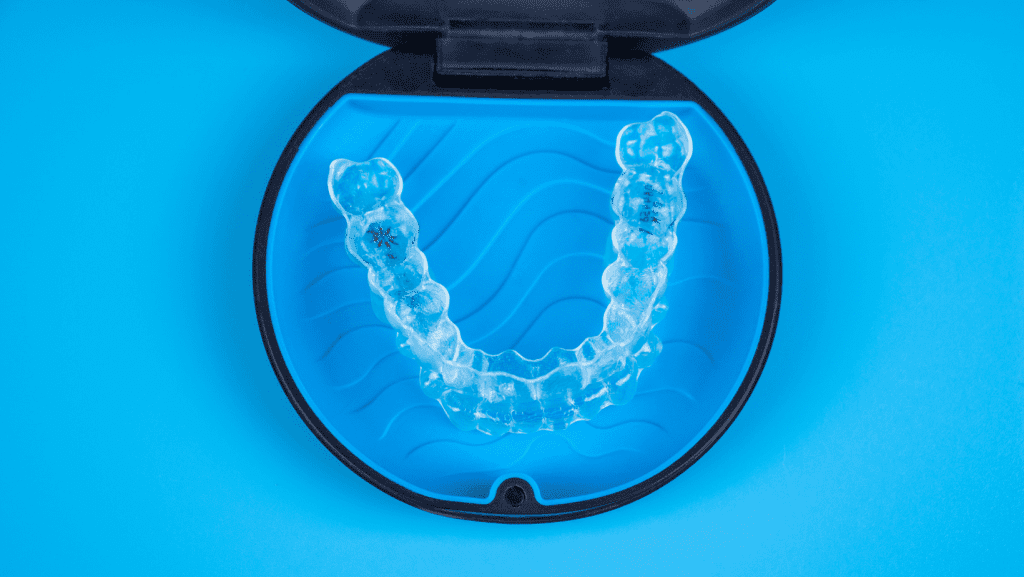Today, a wide variety of orthodontic appliances are available to realign and straighten teeth. One option is removing braces. Custom-made clear plastic trays that fit over your teeth are used in these procedures.
Traditional fixed braces use brackets and wire, whereas removable braces don’t. Because you can take them outside for a few hours each day, they attract a large number of people.
What are Removable Braces?

Removable braces are a type of orthodontic treatment that uses a series of removable, clear plastic aligners to gradually straighten teeth. Unlike traditional braces, which are bonded to the teeth with metal brackets and wires, removable braces are much less noticeable and can be removed for eating, drinking, and brushing.
Most people who choose removable braces are adults or teens who have mild to moderate misalignment of their teeth. Treatment with removable braces typically takes 9-15 months, depending on the severity of the misalignment.
If you’re considering removable braces, it’s important to consult with an orthodontist to see if you’re a good candidate for treatment. Not everyone is a good candidate for removable braces, and your orthodontist will be able to determine if this type of treatment is right for you.
What are the Benefits of Removable Braces?

There are many benefits to having removable braces. Some of the benefits include:
- They are less visible.
- They are more comfortable.
- Patients who wear these aligners may feel more confident because of their subtle appearance.
- They are easier to clean.
- They are less likely to cause mouth irritation.
- They are less likely to damage your teeth.
- They can be removed for eating and drinking.
- They can be removed for sports.
- They can be removed for special occasions.
- They can be used to correct a wide variety of dental problems.
- They are more affordable than traditional braces.
How Often You Should Wear Them
Most of the day, you may wear removable braces. Regular oral examinations by your orthodontist will ensure that the removable braces are performing in accordance with your treatment plan.
How Effective Are Removable Braces Compared To Fixed Braces?

If you’re considering braces, you may be wondering if Invisalign is a better option than traditional braces. Invisalign is a popular choice for adults and teens who want to straighten their teeth without the conspicuousness of metal braces. But how does Invisalign compare to traditional braces in terms of effectiveness?
Let’s take a look at the pros and cons of each type of braces to help you decide which is right for you.
Effectiveness
Traditional braces are very effective at straightening teeth. In fact, they’re the most effective type of braces available. If your goal is to get your teeth as straight as possible, traditional braces are the best option.
Invisalign is also quite effective at straightening teeth. However, since they rely on clear aligners rather than brackets and wires, they may not be able to correct very complex dental issues. If you have severe crowding or misalignment, Invisalign may not be the best option for you.
Appearance
This is where Invisalign really shines. Because they’re made of clear plastic, Invisalign aligners are virtually invisible. If you’re self-conscious about wearing braces, Invisalign is a great option.
Traditional braces, on the other hand, are very visible. The brackets and wires can be distracting, and some people feel self-conscious about wearing them. If you don’t mind the appearance of traditional braces, they’re a great option for getting your teeth straightened.
Comfort
Invisalign aligners are made of smooth, comfortable plastic. They’re designed to fit snugly against your teeth, and they shouldn’t cause any discomfort.
Traditional braces, on the other hand, can be uncomfortable. The brackets and wires can rub against your gums and cheeks, causing irritation. If you have sensitive teeth, traditional braces may not be the best option for you.
Convenience
Invisalign aligners are removable, so you can take them out to eat, brush, and floss. You’ll need to be diligent about wearing them, however, to ensure that they’re effective.
Traditional braces are not removable. You’ll need to take extra care to brush and floss around the brackets and wires. You may also need to avoid certain foods that can damage the braces.
Cost
Invisalign is generally more expensive than traditional braces.
If you have dental insurance, however, it may cover part of the cost of both Invisalign and traditional braces. Check with your insurance provider to see if your plan covers orthodontic treatment.
Duration
Invisalign treatment typically takes 12 to 18 months. Traditional braces, on the other hand, can take two to three years to complete.
If you’re looking for a quicker option, Invisalign may be the best choice for you. However, if you don’t mind wearing braces for a longer period of time, traditional braces may be a better option.
As you can see, there are pros and cons to both Invisalign and traditional braces. The best option for you will depend on your individual needs and preferences. If you’re not sure which type of braces is right for you, talk to your orthodontist. They can help you make the best decision for your smile.
Pros and Cons of Removable Braces

Pros:
1. Removable braces are less expensive than traditional braces.
2. They are less visible than traditional braces, so you can feel more confident about your appearance.
3. They can be removed for eating and cleaning, so you don’t have to worry about food getting stuck in your braces.
Cons:
1. Removable braces can be less effective than traditional braces.
2. They can be uncomfortable to wear.
3. They can be difficult to keep clean
Pros and Cons of Fixed Braces
There are many reasons to consider getting braces, but there are also some potential downsides to think about before you make your decision. Here, we’ll take a look at some of the pros and cons of fixed braces to help you decide if they’re right for you.

Pros:
– They’re very effective at straightening teeth.
– They’re usually less expensive than other types of braces.
– They’re less likely to cause mouth irritation than other types of braces.
Cons:
– They’re not removable, so you’ll have to be careful about what you eat and how you brush your teeth.
– They can be uncomfortable, especially when they’re first put on.
– It can be difficult to find braces that match your natural tooth color.
Conclusion
For orthodontic issues that are mild to moderate, removable braces are an alternative. Not all orthodontic needs may be met by them.
You can test out removable braces through a direct-to-consumer company or your nearby orthodontist.
In comparison to traditional braces, removable braces could be less expensive and might help your condition get better faster.


